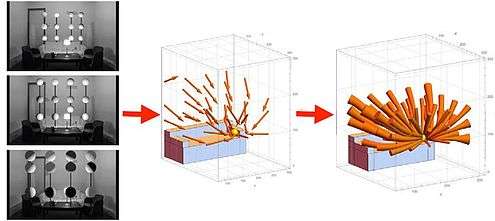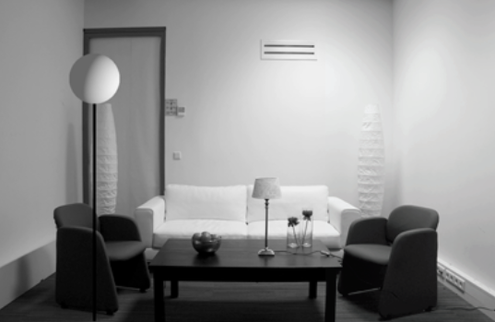Cubic photometer makes light in a room visible

Light determines how we see the world. Take a golf ball: we can see the shine on it, make out the structure or even perceive it as a flat disk because in a certain light we cannot see any shadow. Knowledge of light and how we perceive it can help designers to make our life and work easier. Measurements made with a cubic photometer and software have now been used to make a systematic analysis of the light in a room. Sylvia Pont, appointed as Antoni van Leeuwenhoek professor in 2016 for her work in the Perceptual Intelligence lab (PI or π-lab), will present her research during her inaugural lecture on Friday 31 March.
Light falling on a golf ball
We already know a lot about light falling on a surface, but if we are to determine the properties of light, we also need research on the light within a room. But making the properties of light in a room visible is quite a challenge. Sylvia Pont and a group of students and doctoral candidates studied the properties of light and discovered that they can be defined as the sum of three types of light. These can be demonstrated using a golf ball, a 'beam catcher'.
Sylvia Pont: "Here in the room, the light comes from above, so the top of the ball is lighter than the bottom. We call this the 'focus light'. You can also see that the shadow side isn't one hundred percent dark. We call this 'ambient light'. This is diffuse light, the sort of light you see when you go skiing in the mist. The other type of light is 'brilliance light', the high angle frequencies in a starry sky, for example."
Cubic photometer
A self-built cubic photometer helped them to measure the light in a room (the 'light field'), for example in a living room. Sylvia Pont: "The cube was fitted with six sensors to record measurements in six directions. We took the measurements at different points in the room. Then, using a computer programme, we translated the data from the photometer into schematic 3-D shapes. The shapes revealed the characteristics of the light, for example the direction, intensity and diffusivity of the light through a room."

Perceiving light
Alongside the measurements from the photometer (giving optical, objective measurements), tests were also carried out with test subjects (giving perceptual, subjective measurements) to assess their sensitivity to light in a room. The test subjects were asked to set the light on a so-called 'light probe' (a white sphere) to match the light in a photo they were given. They did this at various points around the room. The figure above shows the results for one of the test subjects. The comparison of the objective optical and subjective perceptual illuminated area shows that people are sensitive to the spatial distribution of light in the room. They are less able to perceive deflected light. Pont: "So this is an aspect that designers don't need to pay so much attention to, or they can use it to design a surprise element."
Illuminating a velvet dress
An understanding of light in a room and how the properties of light affect the way materials are perceived can help artists, photographers, architects and lighting designers in their work.
Sylvia Pont: "Lighting designers focus on questions like: How can we use light to improve our day-to-day life and working environment? To make offices pleasant places to work, or to help surgeons distinguish between healthy and abnormal tissue? We need a lot more knowledge to do this. Not only knowledge of what light is, but also of how light affects our perception of materials, shapes and spaces. Together with Philips Research, we've studied optimum ways of illuminating clothing to give consumers a better idea of the fabrics. You need different light to illuminate a velvet dress than you do to show off a cotton or silk dress, for example. Knowledge of light and how it interacts with materials and shapes has enabled us to now do this far better."
Provided by Delft University of Technology





















